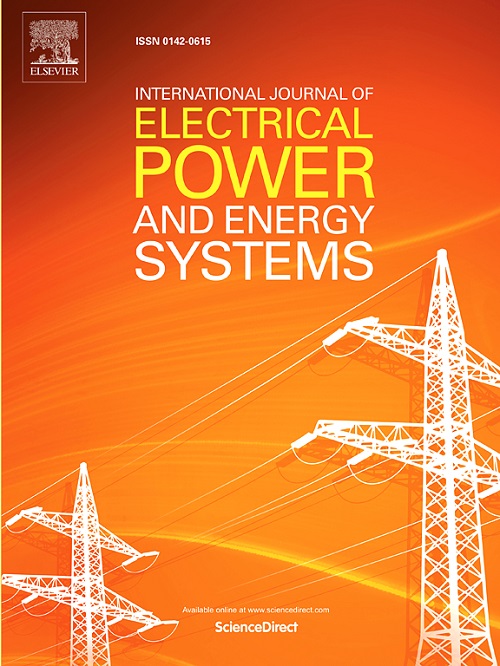定子电压矢量控制下基于 DFIG 的风能转换系统的稳定性和模态分析
IF 5
2区 工程技术
Q1 ENGINEERING, ELECTRICAL & ELECTRONIC
International Journal of Electrical Power & Energy Systems
Pub Date : 2024-10-11
DOI:10.1016/j.ijepes.2024.110286
引用次数: 0
摘要
在定子磁通取向的双馈感应发电机风能转换系统(DFIG-based WECS)中,本文建立了基于定子电压矢量控制的非线性风力发电系统,并针对双馈感应电机磁链观测误差的影响进行了模态和稳定性分析。首先,建立了基于双馈异步电机的 WECS 的动态模型,并研究了其振荡模式和参与因子,以考虑转子侧和电网侧控制。其次,建立并评估了仅考虑转子侧变流器的 WECS 数学模型。其中包括对电网侧变流器控制环路的理论分析,该控制环路不涉及通过参与变量产生的振荡。同时,使用时域仿真分析和微小信号分析技术验证了 WECS 的基本特性,以及逆变器控制设置产生宽带振荡的可能途径。最后,在硬件在环(HIL)仿真平台上验证了两个动态数学模型和基于双馈变流器的 WECS 在定子电压下的稳定性。仿真和实验均证实,所建立的基于 DFIG 的 WECS 具有良好的并网性能,GSC(电网侧变流器,GSC)的动态过程不参与振荡模式。这项工作为风能的转换和应用提供了理论依据。本文章由计算机程序翻译,如有差异,请以英文原文为准。
Stability and modal analysis of a DFIG-based wind energy conversion system under stator voltage vector control
In a double-fed induction generator-based wind energy conversion system (DFIG-based WECS) with a stator flux orientation, a nonlinear wind power generation system based on stator voltage vector control, is established and analyzed in this paper for modal and stability analysis in response to the effect of the observation error of the magnetic chain of a doubly-fed induction motor. First, a dynamic model of a DFIG-based WECS was created, and its oscillation modes and participation factors were examined in order to account for both rotor-side and grid-side control. Second, a mathematical model for a WECS that considers only the rotor-side converter was built and evaluated. This included a theoretical analysis of the grid-side converter’s control loop, which was not involved in oscillations through participation variables. Concurrently, time-domain simulation analysis and tiny signal analysis techniques were used to validate the fundamental characteristics of the WECS and a possible route for inverter control settings to create wide-band oscillations. Finally, two dynamic mathematical models and the stability of the DFIG-based WECS under a stator voltage were verified on the hardware in the loop(HIL) simulation platform. Both simulations and experiments confirm that the established DFIG-based WECS has good grid-connection performance, that the dynamic process of the GSC (grid-side converter, GSC)does not participate in the oscillatory mode. This work provides a theoretical basis for the conversion and application of wind energy.
求助全文
通过发布文献求助,成功后即可免费获取论文全文。
去求助
来源期刊
CiteScore
12.10
自引率
17.30%
发文量
1022
审稿时长
51 days
期刊介绍:
The journal covers theoretical developments in electrical power and energy systems and their applications. The coverage embraces: generation and network planning; reliability; long and short term operation; expert systems; neural networks; object oriented systems; system control centres; database and information systems; stock and parameter estimation; system security and adequacy; network theory, modelling and computation; small and large system dynamics; dynamic model identification; on-line control including load and switching control; protection; distribution systems; energy economics; impact of non-conventional systems; and man-machine interfaces.
As well as original research papers, the journal publishes short contributions, book reviews and conference reports. All papers are peer-reviewed by at least two referees.

 求助内容:
求助内容: 应助结果提醒方式:
应助结果提醒方式:


